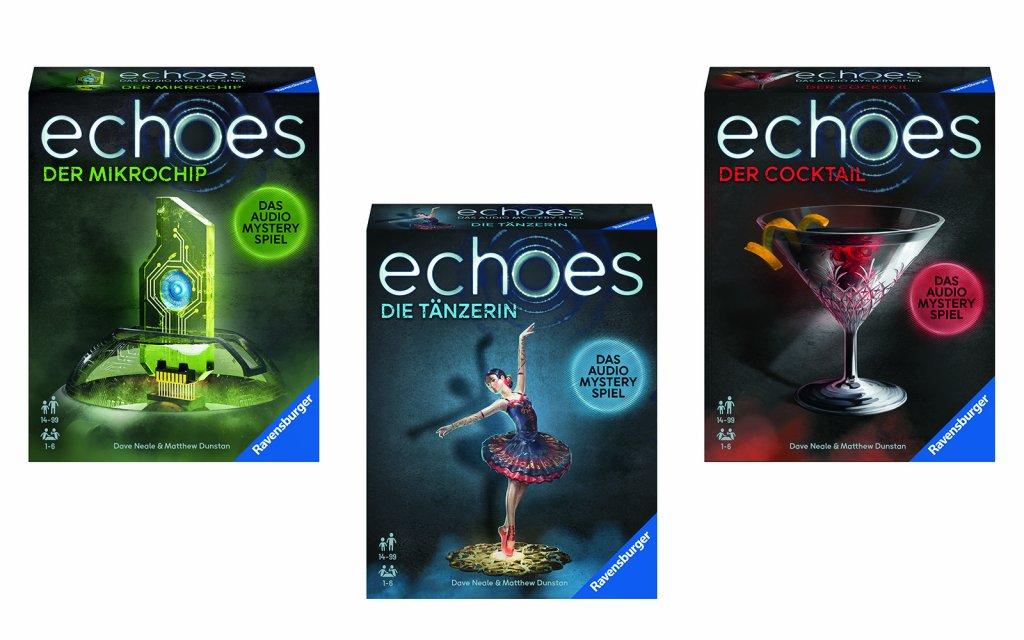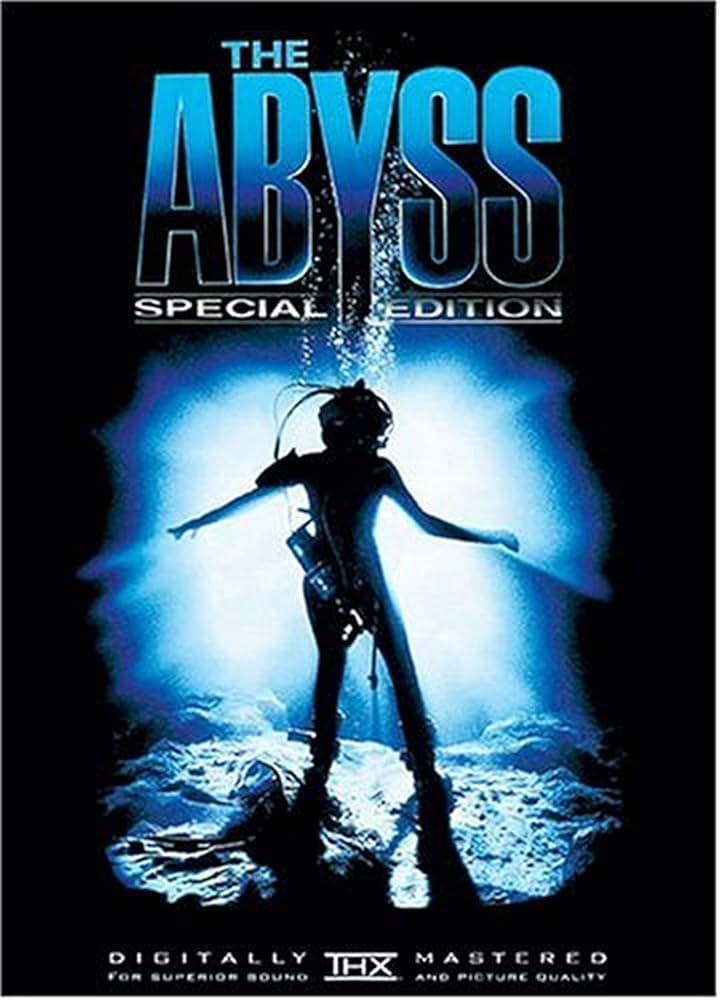Imagine a courtroom drama, but instead of lawyers and evidence, it’s high school students armed with razor-sharp wit and burdened by crippling secrets. That’s the essence of Danganronpa, a franchise renowned for its blend of dark humor, intricate mysteries, and over-the-top executions. Now, a new contender enters the arena: All in Abyss. This anime series, already known for its harrowing depiction of a perilous chasm, takes a surprising turn in its latest installment, seemingly channeling the very spirit of Danganronpa. But does this tonal shift succeed? Does All in Abyss truly capture the delicate balance of despair and absurdist humor that defines Danganronpa? Let’s descend into the depths and find out.
A Familiar Despair Descends
The courtroom sequences, a staple of the Danganronpa series, are meticulously recreated in Abyss Tries. While the vibrant character designs and outlandish scenarios initially evoke a sense of playful absurdity, the narrative quickly takes a darker turn. Just when hope flickers, it’s snuffed out, mirroring the cyclical nature of despair prevalent in its inspiration. The weight of each decision, the creeping suspicion amongst the characters, and the agonizing realization of betrayal are all expertly conveyed. It’s a disturbing familiarity for anyone who has weathered the storm of a Danganronpa class trial, a feeling both unsettling and strangely compelling.
However, Abyss Tries stumbles slightly in balancing its levity and darkness. The humor, while occasionally landing, sometimes clashes with the grim reality unfolding. It creates a tonal dissonance that, while perhaps intentional, can feel jarring. This is further highlighted in the following comparison:
| Feature | Danganronpa | Abyss Tries |
|---|---|---|
| Humor | Dark, Ironic | Occasionally Uneven |
| Mystery | Intricate, Layered | Promising, Needs Refinement |
| Character Development | Strong, Motivated | Developing, Potential |

Echoes of Hopes Peak in the Abyss
Made in Abyss’s initial descent presents a vibrant world brimming with wonder and the thrill of exploration. Riko and Reg’s budding friendship feels genuine, reflecting the hope and optimism found in Danganronpa’s early interactions. Yet, both series share a knack for swiftly turning this lightheartedness on its head. Just as Hope’s Peak Academy’s walls conceal despair, the Abyss’s beauty masks its gruesome nature. The deeper Riko and Reg venture, the more apparent the parallels become. The cheerful facade cracks, revealing harsh truths about survival and sacrifice echoing the desperate situations faced by Danganronpa’s students. The unsettling serenity of the Abyss’s deeper layers, coupled with the escalating peril, mirrors the unnerving tranquility of a killing game in progress.
The curated cruelty of the Abyss isn’t just about physical trials; it targets the emotional core. Both narratives understand the potent impact of psychological torment. Riko’s unwavering determination, even in the face of horrific setbacks, mirrors the resolve of Danganronpa’s protagonists clinging to hope amidst despair. Both series present choices with devastating consequences, forcing characters into moral dilemmas that test their humanity. This exploration of morality within extreme circumstances finds a chilling reflection in both worlds. See the comparison below:
| Feature | Made in Abyss | Danganronpa |
|---|---|---|
| Initial Tone | Whimsical, adventurous | Hopeful, energetic |
| Underlying Threat | The Abyss’s curse | The killing game |
| Psychological Impact | Trauma, despair, resilience | Paranoia, betrayal, desperation |
| Key Theme | Survival and sacrifice | Hope vs. Despair |

Trial and Error: Gameplay Mechanics Compared
Matching the grim atmosphere, All in Abyss Tries’ gameplay mirrors Danganronpa‘s despair-inducing scenarios, but with its own twist. Instead of social deduction and class trials, players must navigate treacherous platforming challenges. Failure often means a gruesome demise for your pixelated protagonist, forcing you to replay sections with the knowledge gained from previous attempts. This trial-and-error gameplay loop can feel frustrating at times, recalling the punishing difficulty of classic platformers. However, sprinkled throughout are insightful narrative nuggets revealed only through death, making each failed run feel like a step closer to understanding the overarching mystery. The game cleverly uses this mechanic to unveil character backstories and world-building details, rewarding persistence with a deeper understanding of the narrative.
While both games center around death as a core mechanic, All in Abyss Tries lacks the same depth of player agency found in Danganronpa’s class trials. The focus shifts from strategic argumentation to precise execution. The following table highlights some core differences in their approaches:
| Feature | Danganronpa | All in Abyss Tries |
|---|---|---|
| Core Gameplay | Social Deduction, Puzzle Solving | Platforming, Trial & Error |
| Player Agency | Influencing Narrative Through Choices | Improving Skill Through Repetition |
| Death Mechanic | Consequence of Failed Deduction | Learning Tool, Narrative Device |

Truth Bullets and Abyssal Fragments
Matching the darkly comedic tone of Danganronpa is a difficult feat. Balancing genuine despair with absurd situations and over-the-top characters requires a delicate touch. Made in Abyss mostly nails that balance in its latest game, embracing both the horrific and the hilarious with equal gusto. While some may find the blend unsettling, it creates a unique atmosphere that underlines the bleak setting. The game doesn’t shy away from the brutal realities of the Abyss, presenting difficult choices that force players to confront the consequences of their actions. These decisions, often framed with the same darkly comedic presentation as Danganronpa’s class trials, provide a compelling narrative drive, leaving players genuinely uncertain of the outcomes.
The juxtaposition of lighthearted exploration with sudden, brutal encounters adds an element of surprise, keeping players on their toes. This is further enhanced by the distinct characters, each with their own quirks and motivations. The following table provides a brief overview of some recurring character “quirks” encountered within the game:
| Character | Quirk |
|---|---|
| Riko | Unwavering Optimism (often to a fault) |
| Reg | Amnesia (creates intrigue and fuels his desire to explore) |
| Nanachi | Pragmatism (a stark contrast to Riko’s idealism) |
These quirks, while sometimes played for laughs, ultimately contribute to the overarching sense of dread. They serve as reminders of the fragility of life within the Abyss, highlighting the precarious nature of the characters’ journeys and echoing Danganronpa‘s own cast of eccentric personalities faced with mortal danger.

The Cast: A Motley Crew of Suspects
All in Abyss throws together a colorful cast of characters, each stranger than the last. We have the washed-up magician with a penchant for disappearing acts (both on and off stage), a robotic maid programmed for sass and surprisingly insightful observations, and a talking pineapple who insists he’s a renowned detective (the jury’s still out on that one). The game struggles a bit to juggle such a large ensemble, and some personalities inevitably get lost in the shuffle. While there are some standout characters – like the surprisingly endearing amnesiac clown – others feel like little more than walking tropes.
The developers clearly aimed for a Danganronpa-esque blend of quirky and unsettling, but the execution feels uneven. The suspect bios offer intriguing glimpses into their backstories, hinting at complex motivations. However, the game rarely delves deeper than surface level. A handy table, like the one below, certainly spices things up and allows players a quick overview of the eccentric personalities they’ll encounter.
| Suspect | Quirk | Suspicion Level (Out of 5) |
|---|---|---|
| Bartholomew (The Magician) | Obsessed with scarves | 4 |
| Unit-734 (The Robotic Maid) | Knows everyone’s darkest secrets | 3 |
| Piña (The Pineapple Detective) | Surprisingly good at riddles | 2 |
| Giggles (The Amnesiac Clown) | Carries a suspiciously heavy suitcase | 5 |

Moral Compass in Murky Waters
Spike Chunsoft clearly aimed for that signature Danganronpa blend of dark humor and twisted morality with All in Abyss. Yet, where Danganronpa presents its dilemmas with a stark, almost theatrical flair, All in Abyss feels… muddier. The lines blur, not in a way that encourages thoughtful introspection, but rather leaves the player wading through a mire of discomfort. The questionable choices offered often lack the punchy, perverse logic that makes Danganronpa’s trials so captivating. Instead, they feel haphazard, almost as if the developers threw a handful of morally grey scenarios at the wall and hoped something would stick.
This isn’t to say the game doesn’t have its moments. Certain scenarios do manage to elicit a genuine sense of unease, forcing difficult considerations. However, the impact is lessened by a pervasive lack of clarity. The player is often left questioning the motivations and consequences of their choices, a frustration compounded by the game’s sometimes convoluted narrative.
| Element | Danganronpa | All in Abyss |
| Moral Dilemmas | Sharp, Deliberate | Blurred, Uncertain |
| Player Agency | Meaningful Impact | Muddied Consequences |
| Overall Tone | Darkly Humorous, Thought-Provoking | Unsettling, Occasionally Confusing |

Investigating the Depths: Exploration and Discovery
Spike Chunsoft clearly attempts to recapture the magic of Danganronpa with Made in Abyss: Binary Star Falling into Darkness. The “Hello Abyss” mode pits the player against a survival RPG, delicately layered over a “killing game” storyline. While resource management in the Abyss adds a unique tension, mimicking the claustrophobia of Hope’s Peak, forcing desperate choices, the emotional stakes never quite reach the same heights. Riko and Reg’s established relationship anchors the narrative, offering a heartwarming counterpoint to the darker themes. However, their presence somewhat dilutes the impact of the new characters, particularly when their own relationships are strained and fractured by the unfolding events.
Does the game succeed in mirroring Danganronpa’s signature blend of hope and despair? The answer is complex. The mechanics create a sense of dread, especially with the constant threat of the Curse, mirroring the ever-present threat of Monokuma’s machinations. But the mystery of the Abyss feels more external, less tied to the interpersonal dynamics of the group. See the table below to explore the key differences in tension-building tactics employed by each game:
| Element | Danganronpa | Made in Abyss |
|---|---|---|
| Source of Tension | Interpersonal Conflict & Hidden Motives | Environmental Hazards & Resource Depletion |
| Driving Force | Desire to Escape & Expose the Mastermind | Survival & Reaching the Next Layer |
| Player Agency | Deduction & Social Manipulation | Exploration & Resource Management |

Building Tension: Story Pacing and Twists
Abyss initially struggles to maintain a consistent pace. The early mysteries, while intriguing, unfold a bit too slowly. The show teases information, but sometimes holds back too much, leaving the viewer wanting more momentum. This unevenness creates a sense of disconnect between the urgency the narrative is trying to convey and the actual speed at which the plot progresses. It’s like a ticking clock that occasionally pauses, disrupting the flow of suspense. However, the introduction of new characters and the gradual escalation of the stakes in the second half breathe fresh life into the narrative. The stakes become convincingly higher, and the desperation of the characters feels palpable.
While Abyss borrows some thematic elements from Danganronpa, it struggles to replicate its mastery of shocking twists. The reveals, while not entirely predictable, lack the same punch. Danganronpa thrives on subverting expectations and pulling the rug out from under the viewer, creating a constant state of surprise and unease. Abyss, on the other hand, tends to telegraph its twists, making them less impactful. The following table highlights some key differences in how both narratives handle pivotal moments:
| Aspect | Danganronpa | Abyss |
|---|---|---|
| Foreshadowing | Subtle and misleading | More overt and predictable |
| Character Deaths | Shocking and unexpected | Less impactful, occasionally anticipated |
| Motivations | Complex and layered | Relatively straightforward |

Verdict on Visuals and Sound Design
All in Abyss leans heavily into a stark, high-contrast aesthetic. Deep blacks and vibrant, almost neon colors dominate the character sprites and UI, evoking a sense of unease and artificiality. While individually striking, the overall effect can feel somewhat disjointed. The environments, rendered in a more muted, almost washed-out style, don’t always mesh well with the character designs. This clash creates a visual dissonance that, while perhaps intentional, doesn’t always contribute positively to the atmosphere. The frequent use of close-ups on character portraits during pivotal moments is effective, however, successfully conveying the intended emotional weight.
Sound design is where All in Abyss often falters. While the music occasionally hits the mark with appropriately unsettling melodies, the sound effects feel surprisingly generic. The repetitive use of stock stabbing and slashing noises during pivotal scenes undercuts the intended drama. The voice acting, where present, is a mixed bag. Some performances are quite strong, bringing much-needed nuance to the characters. Others feel phoned in, lacking the energy and conviction required to sell the game’s more over-the-top moments.
| Element | Effectiveness |
| Visuals – Characters | Strong, albeit disjointed |
| Visuals – Environments | Inconsistent, clashing |
| Sound – Music | Occasionally effective |
| Sound – Effects | Generic and repetitive |
| Voice Acting | Inconsistent, mixed quality |

Does the Abyss Hold its Own Against Despair?
Made in Abyss and Danganronpa both revel in contrasting aesthetics, juxtaposing vibrant visuals with stomach-churning scenarios. Where Danganronpa leans into a highly stylized, almost cartoonish gore, All in Abyss opts for a more visceral, unsettling horror. While both narratives explore themes of hope and despair, they present them through different lenses. Danganronpa‘s despair is theatrical, manipulative, born from elaborate games and twisted motivations. Made in Abyss, on the other hand, finds its horror in the unforgiving and unknowable nature of the titular Abyss. This distinction manifests in the characters’ reactions. In Danganronpa, despair often leads to exaggerated breakdowns, while Made in Abyss characters are forced into a grimmer, more resilient acceptance of their harsh reality.
While All in Abyss attempts to capture the spirit of Danganronpa‘s despair, it doesn’t quite reach the same heights. This isn’t due to a lack of trying, but rather a difference in core narrative structure. Danganronpa’s closed-off setting and enclosed cast amplify the sense of claustrophobia and paranoia. Made in Abyss, with its expansive world, allows for a different kind of tension. It trades psychological manipulation for environmental dread. The table below illustrates these key differences:
| Feature | Danganronpa | Made in Abyss |
|---|---|---|
| Source of Despair | Interpersonal, psychological | Environmental, existential |
| Visual Style | Stylized, exaggerated | Detailed, visceral |
| Setting | Confined, claustrophobic | Open, expansive |
| Character Reactions | Theatrical breakdowns | Resilient acceptance,grim determination |

Reaching the Surface: Final Thoughts and Recommendations
Ultimately, Made in Abyss carves its own unsettling path. While the tonal parallels with Danganronpa are intriguing, the relentless descent into the Abyss creates a unique and suffocating atmosphere. The whimsical character designs clash spectacularly with the horrific dangers they face, escalating the sense of dread. It’s this juxtaposition that truly sets Made in Abyss apart, leaving a lingering unease long after the credits roll. The series’ strength lies not in mimicking, but in twisting familiar anxieties into something profoundly disturbing and beautiful.
Ready to take the plunge? Consider these factors before descending into the Abyss:
- Emotional Resilience: Made in Abyss doesn’t shy away from graphic content and disturbing themes. Be prepared for some truly unsettling moments.
- A Taste for Adventure: If you enjoy exploring mysterious worlds filled with strange creatures and captivating lore, then the Abyss awaits.
- Patience for Worldbuilding: The series takes its time unraveling the secrets of the Abyss. Don’t expect instant gratification.
| Pros | Stunning visuals, captivating lore, complex characters, unique blend of whimsy and horror. |
| Cons | Graphically disturbing content, slow pacing, potentially triggering themes. |

A Dive Worth Taking? For Fans and Newcomers
Matching the darkly comedic, often unsettling tone of Danganronpa is a high bar to clear. All in Abyss certainly makes a valiant attempt, plunging headfirst into its own brand of despair. While the vibrant visuals and initial sense of childlike wonder might initially seem at odds with such a comparison, the anime quickly reveals its teeth. The brutal realities awaiting Riko and Reg within the Abyss echo the claustrophobic tension and unpredictable twists of Hope’s Peak Academy, albeit with a more fantastical, less overtly malicious bent. The series succeeds in creating a genuine sense of dread, making each descent feel like a gamble with increasingly higher stakes.
For Danganronpa fans craving a new fix of moral dilemmas and unexpected turns, All in Abyss provides a compelling alternative. The colorful cast, while lacking the over-the-top personalities of ultimate students, still manage to be captivating and relatable. Newcomers to this particular flavor of narrative whiplash will also find plenty to enjoy. The intricate world-building and mesmerizing visuals are just as engaging as the plot’s twists and turns. Just remember to buckle up. The Abyss, much like a Killing Game, offers no easy escapes.
| Element | All in Abyss | Danganronpa |
| Setting | The Abyss | Hope’s Peak Academy |
| Tone | Dark fantasy, unsettling | Darkly comedic, suspenseful |
| Core Theme | Survival, discovery | Despair vs. Hope |
To Wrap It Up
So, the verdict? Made in Abyss and Danganronpa, while traversing drastically different landscapes—one a gaping chasm, the other a meticulously crafted cage—share a certain unsettling harmony in their narrative dissonance. They both whisper of hope amidst despair, tinged with the macabre cost of youthful ambition. Whether or not this tonal resonance enhances or detracts from the individual experiences remains subjective. Ultimately, the descent into the Abyss, much like the descent into despair within Hope’s Peak Academy, is a journey best taken with eyes wide open, braced for the unexpected and the undeniably unsettling. The question now becomes, which dark descent will you brave next?






